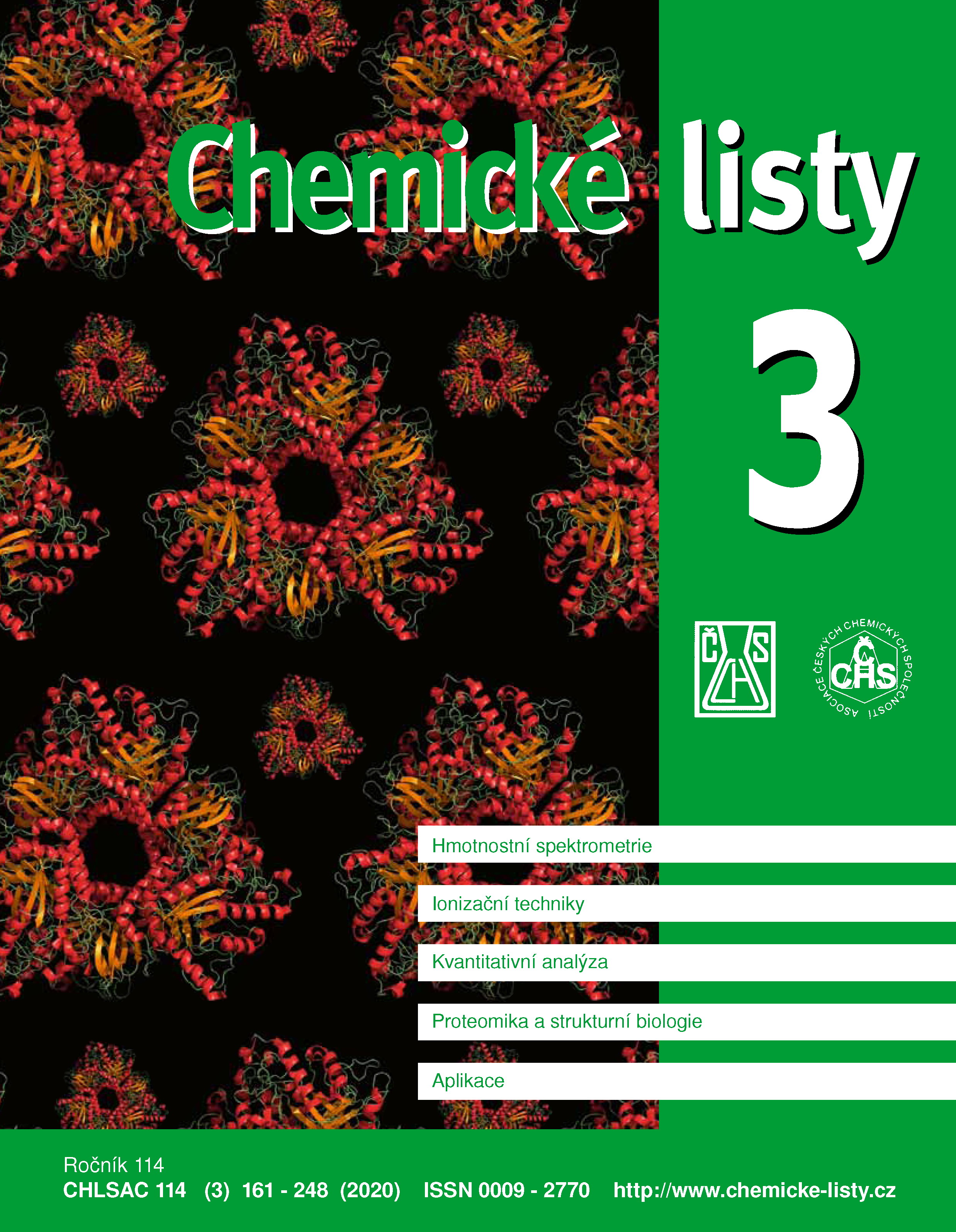Chemická ionizace
Klíčová slova:
hmotnostní spektrometrie, chemická ionizace, iontový zdrojAbstrakt
Chemical ionization belongs to the soft ionization methods. It can be carried out under various pressure. Discussed classical chemical ionization is performed in vacuum with reagent gas pressure of ≈102 Pa and is convenient for ionization of sufficiently volatile compounds. The reagent gas is ionized by energetic electrons. Its ions react with molecules of analytes. Positive analyte ions are formed by proton transfer, cation addition, less often hydride (anion) abstraction, or charge transfer. Deprotonation, anion attachment, and electron capture represent possible pathways in negative-ion chemical ionization. Samples are introduced into the ion source from a reservoir, using direct probe or most often from a gas chromatograph in GC/MS. Chemical ionization well complements hard electron ionization. It provides the values of relative molecular masses of analytes since the ions generated (e.g. [M+H]+) comprise analyte molecules and are sufficiently stable to be observed in mass spectra.





